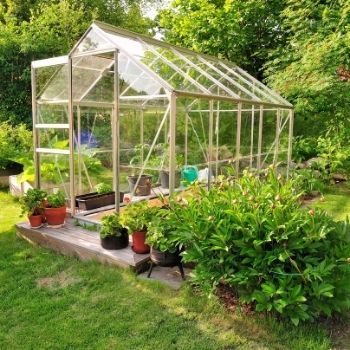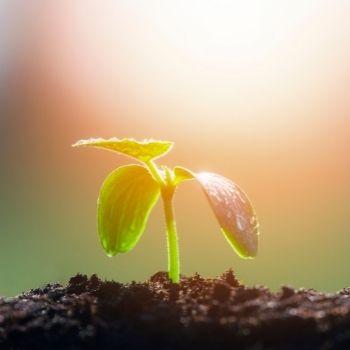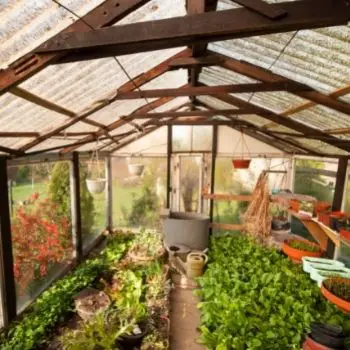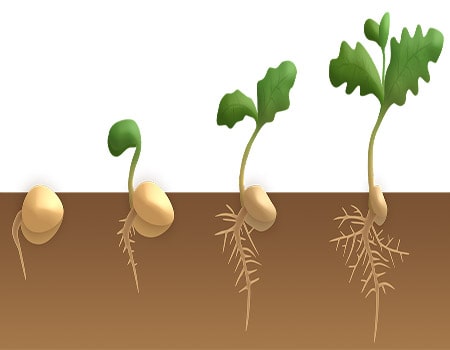Greenhouses are a great way to extend the growing season for plants. But do they make plants grow quicker? Greenhouses can create the perfect environment for plants to thrive, but there are many factors that affect how quickly plants grow. So, does a greenhouse make plants grow quicker?
Greenhouses make plants grow quicker by creating an environment that meets their needs to the extreme. They use glass or polycarbonate walls to trap the gases plants need to breathe, as well as the heat and moisture seeds need to grow. They can even provide irrigation and temperature management.
We will give more details on plant growth inside a greenhouse and if that growth produces better yields. Leep reading to learn everything you need about plant growth in a greenhouse.
- Does A Greenhouse Make Plants Grow Quicker
- How much faster do plants grow in a greenhouse
- Greenhouses are Mother Nature’s Gasmask
- Germination: The Silent Life-Giver
- A Structure for all Seasons
- How does a greenhouse work to help plants grow
- Do plants grow better in a greenhouse
- Do vegetables grow faster in a greenhouse
- Conclusion
Does A Greenhouse Make Plants Grow Quicker
It is often said that a greenhouse can make plants grow quicker. But is this really the case? Let’s take a closer look.
A greenhouse is simply a structure that helps to create an environment that is ideal for plant growth. This means that the temperature and humidity levels are controlled, and there is plenty of sunlight. All of these factors can help to speed up the growth of plants.

In addition, a greenhouse can also protect plants from pests and diseases. This can further help to boost growth rates.
So, does a greenhouse make plants grow quicker? Yes, it certainly can! Especially when compared to plants that are not grown in absolutely optimal conditions. But it’s important to remember that each plant is different and will respond differently to the conditions in a greenhouse.
How much faster do plants grow in a greenhouse
Plants typically grow faster in a greenhouse due to the controlled environment. Greenhouses provide plants with the optimal amount of sunlight, temperature, and humidity, which encourages growth. Additionally, greenhouses protect plants from pests and diseases that can slow down their growth.
As well as from faster, they produce higher yields and are of better quality. This is due to the increased CO2 levels in a greenhouse which helps with photosynthesis, as well as the protection from harsh weather conditions.
In short, plants grow faster, produce higher yields, and are of better quality in a greenhouse.
How long does it take to grow plants in a greenhouse
The average time it takes to grow plants in a greenhouse can vary depending on the type of plant, the climate, and other factors. In general, most plants will take anywhere from two weeks to six months to fully mature.
For example, planting sun-loving plants such as peppers, tomatoes, and eggplants will typically take around 100 – 150 days to reach maturity. This is assuming ideal conditions are met.

Greenhouses are Mother Nature’s Gasmask
The most advanced greenhouses are designed with a highly scientific understanding of the plants that live within them. They will have sensors that detect everything from heat, to humidity, to the micro-bacteria in the air.
In order to stimulate optimal plant growth, these sensors will communicate with heaters, air vents, sprinklers, and specialized lights that produce exactly the wavelength of light the plants need to grow the fastest.
But that is for the most cutting-edge of greenhouse technology. The fundamentals of greenhouses are much simpler.
To begin with, greenhouses are sealed shut to keep all the gases plants produce and consume contained.

Plants breathe carbon dioxide during the day and produce oxygen as a by-product. Then at night, they do the opposite, breathing in oxygen and producing carbon dioxide.
Keeping a greenhouse sealed allows plants to have constant access to their own breathing cycle. It’s as if the greenhouse was a giant gas mask for the plants inside.
Besides trapping air, the most basic function of a greenhouse is to trap heat.
Sunlight passes through the glass panels of the greenhouse, but once it reaches the ground it bounces off as a different kind of light. This light is infrared light, and the glass panels of a greenhouse are designed to hold it in.
This in turn holds in its heat, which is why greenhouses are so warm. Plants love this warmth, though it’s more accurate to say the plant’s seeds love this warmth.
Germination: The Silent Life-Giver
The reason heat benefits plants so much is because of a process called “germination”. Germination is the process of a seed growing into a plant. Seeds are inanimate balls of enzymes encased by a protective shell, all surrounding an embryonic plant.
They remain dormant in this state until they are given dirt in which to root, water to drink, and heat to stimulate their growth. They are so dormant that seeds as ancient as 2,000 years old have been able to grow into plants.
Most seeds will remain dormant until exposed to sufficient heat, which greenhouses specialize in providing. In addition to heat, the seeds need water to stimulate their metabolisms. The heat does not just trigger growth though, it also stimulates it.

Heat increases the rate of chemical reactions. That is where the humidity of greenhouses comes in: The lingering heat of the greenhouse warms the water inside the soil, making it react with the seed’s enzymes more potently. The more potent the reaction, the greater the growth.
A Structure for all Seasons
However, it would be an oversimplification to simply say that more heat means more growth. If that were true, the Sahara Desert would be a lush and vibrant place. There’s nuance to the environment of a greenhouse.
Heat stimulates growth, but it can also dry out the soil and leave seeds with nothing to feed their plant embryos. Therefore many greenhouses will have vents to manage the heat of their ecosystems.
The vents are electrical and automated, turning on to release heat once the temperature of the greenhouse gets above a certain threshold.
All that technology just to grow some carrots makes the process seem more complicated than it is. Back in ancient Roman times, some of the earliest recorded artificial environments were achieved by growing potted vegetables in carts.

The carts would be wheeled from the sun to the shade depending on their growth needs. Sounds much easier than installing sensors, vents, and LED sunlamps.
Part of the purpose of a greenhouse is for it to be low maintenance. Just remember that technology can increase maintenance as much as it can decrease it.
Many greenhouses will be built with trees situated outside their western-most wall. This is because the trees will provide shade during the summer when the days are long and the heat is most likely to negatively affect plant life.
However, the trees will shed their leaves during the winter, meaning that the shade will disappear, and the much-needed sunlight will be allowed in for the whole day.
How does a greenhouse work to help plants grow
A greenhouse typically has a glass roof and walls to allow sunlight in. The plants, floor, and other objects inside the greenhouse absorb the sunlight and convert it into heat energy. This heat is then radiated back into the air inside the greenhouse, gradually over time.
This creates a microclimate that heats the air inside the greenhouse for hours, keeping the temperature suitable for tender plants long after the sunsets.
The plants inside the greenhouse will benefit from the extra warmth and humidity, allowing them to grow more quickly than if they were outside in the colder, dryer air. Greenhouses can also be used to protect plants from pests and diseases, providing a safe environment for them to flourish.
Do plants grow better in a greenhouse
There is no definitive answer to this question, as there are many factors that can affect plant growth. However, in general, plants do tend to grow better in a greenhouse environment, due to the controlled temperature and humidity levels.
Additionally, greenhouses typically have more sunlight than outdoor environments, which can also promote better plant growth.
Do vegetables grow faster in a greenhouse
There are a number of factors that can affect how quickly vegetables grow in a greenhouse, including the type of vegetable, the climate, and the care that the plants receive.
In general, though, it is possible for vegetables to grow relatively quickly in a greenhouse environment. This can be beneficial for those who want to have a consistent supply of fresh produce.
Conclusion
So, does a greenhouse make plants grow quicker? A greenhouse can be a great environment for plants to grow in, as they will benefit from the controlled temperature and humidity levels. Additionally, greenhouses typically have more sunlight than outdoor environments, which can also promote better plant growth.
While there is no definitive answer to whether vegetables grow faster in a greenhouse, it is possible for them to do so under the right conditions. Ultimately, the decision of whether or not to grow vegetables in a greenhouse is up to the individual gardener.






